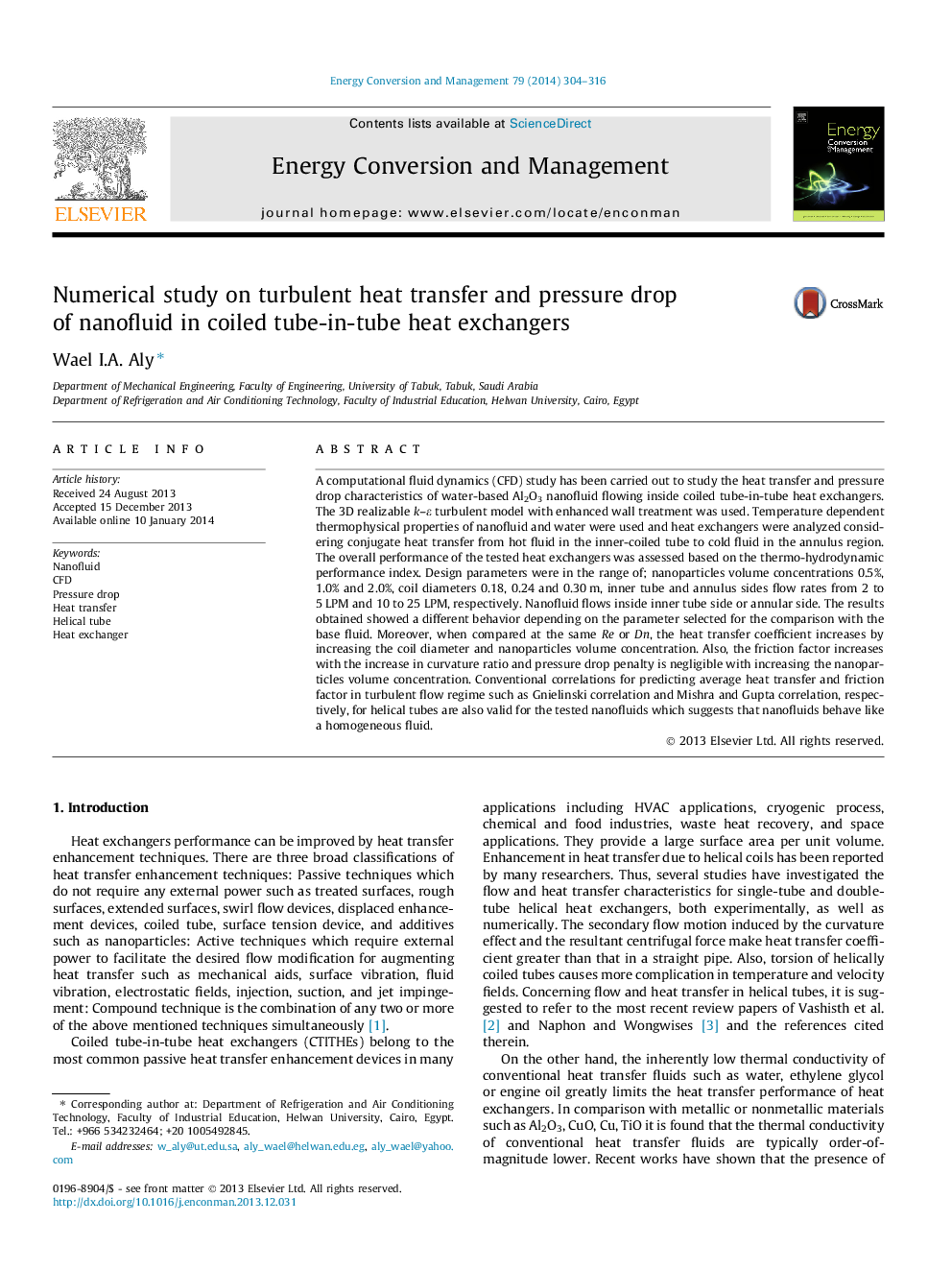| Article ID | Journal | Published Year | Pages | File Type |
|---|---|---|---|---|
| 771982 | Energy Conversion and Management | 2014 | 13 Pages |
•The performance of helically coiled tube heat exchanger using nanofluid is modeled.•The 3D turbulent flow and conjugate heat transfer of CTITHE are solved using FVM.•The effects of nanoparticle concentration and curvature ratio are investigated.•The Gnielinski correlation for Nu for turbulent flow in helical tubes can be used for water-based Al2O3 nanofluid.
A computational fluid dynamics (CFD) study has been carried out to study the heat transfer and pressure drop characteristics of water-based Al2O3 nanofluid flowing inside coiled tube-in-tube heat exchangers. The 3D realizable k–ε turbulent model with enhanced wall treatment was used. Temperature dependent thermophysical properties of nanofluid and water were used and heat exchangers were analyzed considering conjugate heat transfer from hot fluid in the inner-coiled tube to cold fluid in the annulus region. The overall performance of the tested heat exchangers was assessed based on the thermo-hydrodynamic performance index. Design parameters were in the range of; nanoparticles volume concentrations 0.5%, 1.0% and 2.0%, coil diameters 0.18, 0.24 and 0.30 m, inner tube and annulus sides flow rates from 2 to 5 LPM and 10 to 25 LPM, respectively. Nanofluid flows inside inner tube side or annular side. The results obtained showed a different behavior depending on the parameter selected for the comparison with the base fluid. Moreover, when compared at the same Re or Dn, the heat transfer coefficient increases by increasing the coil diameter and nanoparticles volume concentration. Also, the friction factor increases with the increase in curvature ratio and pressure drop penalty is negligible with increasing the nanoparticles volume concentration. Conventional correlations for predicting average heat transfer and friction factor in turbulent flow regime such as Gnielinski correlation and Mishra and Gupta correlation, respectively, for helical tubes are also valid for the tested nanofluids which suggests that nanofluids behave like a homogeneous fluid.
